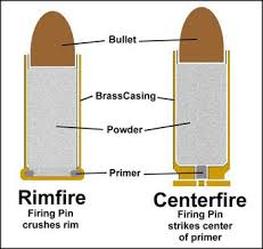Federal Primers Fundamentals Explained
Wiki Article
The 9-Second Trick For Cci Primers
Table of ContentsSome Ideas on Primers For Sale You Should KnowReloading Primers Things To Know Before You BuyThe smart Trick of Rifle Primers That Nobody is Talking AboutTop Guidelines Of Reloading PrimersSome Known Details About Pistol Primers
Part of the gun cartridge for starting propellant burning In weapons and artillery, the guide () is the chemical and/or tool liable for launching the propellant combustion that will certainly push the projectiles out of the gun barrel. In early black powder weapons such as muzzleloaders, the primer was essentially the very same chemical as the major propellant (albeit typically in a finer-powdered kind), however poured into an outside flash frying pan, where it can be stired up by an ignition resource such as a sluggish match or a flintlock Some muzzleloaders have guides like cap weapon caps.
Instances consist of hand gun cartridges, rifle cartridges, and shotgun shells. Bigger weapons items on the other hand generally utilize electrical priming. In weapons the guides are often a different part, put inside the barrel to the back of the primary propellant chargebut there are other examples of weapons, including for example some automated tools, made to fire cartridges with important electric guides.
Some Known Details About Winchester Primers

This opening was filled with finely ground powder, which was after that sparked with a warm ash or lantern. With the introduction of hand-held firearms, this came to be an unfavorable means of shooting a weapon. Holding a burning stick while trying to put a charge of black powder carefully down a barrel is hazardous, and also attempting to hold the gun with one hand while at the same time focusing on the target as well as looking for the touchhole makes it really challenging to fire accurately. [] The first attempt to make the procedure of shooting a small arm much easier was the "matchlock".
The suit was a slow-burning fuse constructed from plant fibers that were soaked in a solution of nitrates, charcoal, and also sulfur, and dried out (https://pin.it/1o5MIHk). This "slow-match" was fired up prior to the weapon was needed, as well as it would slowly melt, maintaining a hot cinder at the burning end. After the weapon was packed as well as the touchhole topped with powder, the burning suggestion of the match was placed to make sure that the lock would bring it right into contact with the touchhole.
Federal Primers for Beginners
This brought the match down to the touchhole, igniting the powder - https://www.imdb.com/user/ur157574595/?ref_=nv_usr_prof_2. With cautious attention, the slow-burning suit might be kept burning for long periods of time, and the usage of the lock mechanism made fairly accurate fire feasible. The following transformation in ignition modern technology was the "wheel-lock".

The protected flashpan likewise gave some capacity to endure bad weather. primers for sale. Wind, rain, and wet climate would render a matchlock worthless, but a wheel-lock that was loaded as well as waterproofed with a little bit of oil around the go now flashpan might be fired under many problems. The wheel-lock appreciated just a short duration of popularity prior to being superseded by a simpler, more robust style.
Remington Primers Fundamentals Explained
As the name implies, the flintlock utilized flint instead of iron pyrite. The flint was held in a spring-loaded arm, called the "dick" from the resemblance of its motion to a pecking poultry. The dick rotated via approximately a 90-degree arc as well as was held in the tensioned, or "cocked" setting by a trigger. https://www.ulule.com/andrewjaeger0217/#/projects/followed.The "half-cock" placement held the penis halfway back, and also used a deep notch to make sure that shooting would not release the penis. Half-cock was a security setting, made use of when loading, saving or bring a loaded flintlock. The "full-cock" placement held the cock all the means back as well as was the placement where the weapon was fired.
It acted as both a flashpan cover and a steel striking surface for the flint. The frizzen was pivoted and spring-loaded to ensure that it would secure in the open or shut placement. When shut, the striking surface was positioned to make sure that the flint would strike at the correct angle to produce a spark.
The Buzz on Small Pistol Primers
The flintlock system was simpler and also more powerful than the wheel-lock, as well as the flint and steel gave a great, reliable resource of ignition. The flintlock continued to be in army service for over 200 years, and flintlocks are still made today for historical re-enactments and muzzle-loading target competitors, and for seekers who take pleasure in the extra challenge that the flintlock provides.Percussion ignition was designed by Scottish clergyman Rev. Alexander John Forsyth in 1807 however needed even more refinements prior to it was slowly accepted in the 1820s to 1830s. By the center of the 19th century, the percussion or caplock system was well developed. It was embraced by both sides in the American Civil War, as it was simpler and also more trustworthy than the flintlock.
The flashpan and frizzen were removed and also replaced by a little, hollow straight cylinder (drum) screwed into the bored-out and also tapped flash hole and also bring a "nipple area" over which the cap could be fitted. A "hammer" which likewise had half-cock (for filling and using the cap) and full-cock placements changed the cock.
Report this wiki page